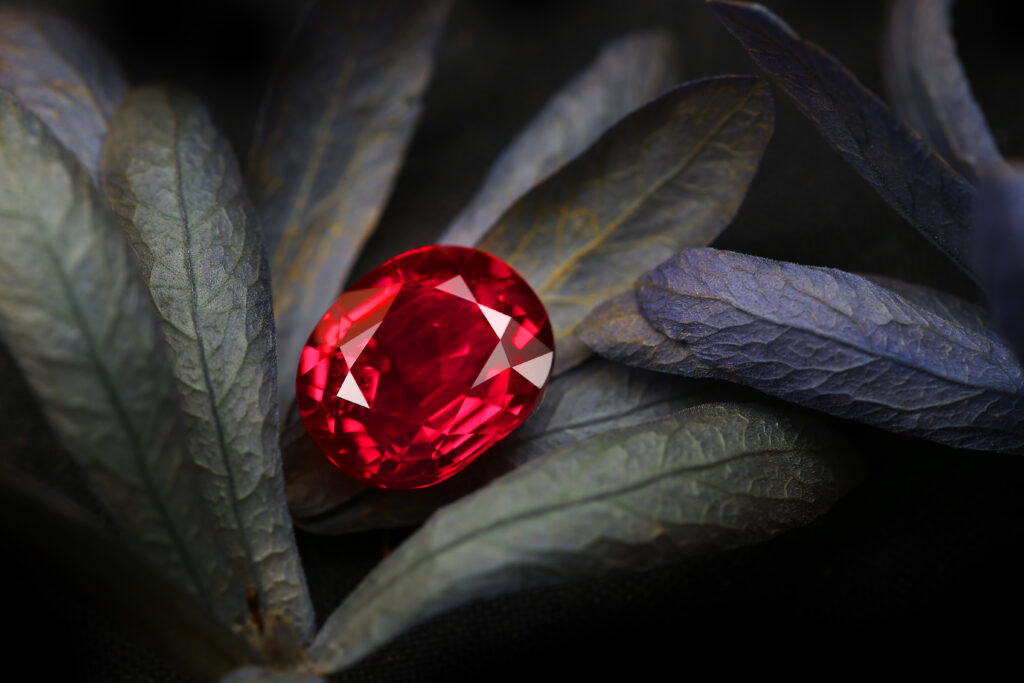A diamond is without a doubt one of the most stunning gemstones ever discovered. A diamond has long been prized for its one-of-a-kind qualities and breathtaking beauty. The colour of a diamond is one of its most stunning characteristics. Natural fancy colour diamonds are in a class by themselves, despite the fact that colourless diamonds are extremely rare. A red diamond is a very rare and precious gemstone. A red diamond is so uncommon that there are only 20 to 30 gem-quality red diamonds in the world.

Below are some more interesting facts regarding red diamonds:
What causes red diamonds to form?
Colour diamonds, but not red diamonds, obtain their unique hues from chemical impurities like boron and nitrogen present throughout the manufacturing process. These one-of-a-kind coloured diamonds are generated with no impurities; a red diamond is made entirely of carbon. But where does the diamond’s red colour come from? The diamond’s red colour is caused by a rare atomic structural distortion. The red colour is caused by a lattice flaw in the diamond that displays stress lamination during the production process, according to most diamond experts. Beautiful red hues emerge from the bending light that flows through the distorted structure of the diamond. The red will appear in a range of colours depending on the quantity of light entering the diamond. The beauty of a natural red diamond is fully caught in natural light, yet it may appear less dazzling under fluorescent light.
The World’s largest red diamond ever found.
The Moussaieff Red Diamond is one of the largest unaltered red diamonds ever discovered. Despite the fact that the exceptional diamond only weighs an estimated 5.11 carats, it is one of the only fancy red diamonds to be evaluated by the GIA, adding to the red diamond’s rarity and uniqueness. In 2001, the stunning red diamond was auctioned and sold for an incredible $8 million (R10 billion). A farmer in Brazil discovered the Moussaieff Diamond, also known as the ‘Red Shield,’ in the mid-1990s. The red diamond weighed an astonishing 13.90 carats when it was discovered. The magnificent diamond was purchased by the New York-based William Goldberg Diamond Corporation, which is recognised for purchasing exceptional jewels like Premier Rose and Guinea Star. The Moussaieff was formed into a stunning triangular brilliant cut diamond after undergoing an extensive diamond cutting and polishing process. The diamond was thought to have lost 8.79 carats, yet the metamorphosis was breathtaking.
What are the best places to look for red diamonds?
Despite the fact that there are numerous diamond mines around the world, red diamonds are mostly discovered in Africa, Brazil, and Australia; the Argyle mines in Australia are one of the most well-known mines in the world for producing red diamonds. India and Russia are two more countries.
A red diamond is worth a lot of money.
The 4Cs are used to fairly evaluate the value of a fancy red diamond, just as they are for any other colourless diamond. The colour of a fancy diamond is regarded particularly crucial when assessing its value. The colour of a diamond has an impact on the cutting plan as well as its value. A diamond cutter will choose a cut that focuses on maximising the stone’s colour and intensity.
The following three characteristics are used to characterise a diamond’s red colour:
1. Diamond Hues – A fancy colour diamond’s colour is determined by the hues of the diamond. When it comes to the appearance of a red diamond, it can have a range of secondary hues. Brownish red, orangey-red, and purplish-red are some of the colours available.
2. Diamond Tones – A diamond’s tone refers to its intensity, which defines whether the diamond is dark or light in colour. A colour diamond’s tone can range from very light to very dark.
3. Diamond Saturation – A fancy colour diamond’s saturation alludes to its strength or weakness. Diamonds with darker tones range from Dark to Deep, while those with lighter tones range from Faint to Vivid.
A red diamond is a really magnificent creation!
